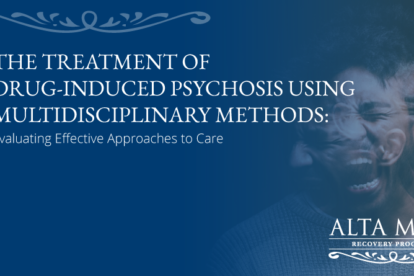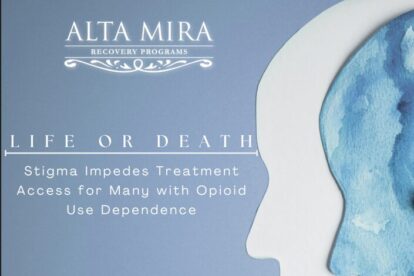What Are the First Signs of Xanax Withdrawal?

The first signs of Xanax withdrawal are also a clear sign of Xanax addiction. If you think someone you care about may be addicted to Xanax, it’s important to be aware of the great risks of both their dependence on the drug and their attempts to discontinue using the drug. The safest and most productive method of recovery starts with medically supervised detoxification, and you can help them find that path today.
The way one feels on Xanax—supremely calm and serene—is in direct contradiction to the potential dangers the drug poses. It may be a powerful support tool for people with anxiety, but misuse with or without a prescription can bring perilous consequences. The risks of Xanax abuse include nervous system damage, overdose and respiratory failure, and, of course, addiction.
There aren’t really predictable symptoms that always arise first with everyone going through Xanax withdrawals. It’s possible for everyone to respond differently to the drug and to the sudden absence of the drug. But one thing that is very important to note is that, for those people who may be in denial or otherwise unaware that they have become dependent on the drug, the first signs of Xanax withdrawal are also signs that they are addicted. It’s also important to know that Xanax withdrawal symptoms certainly can be dangerous. Let’s look at some of those withdrawal symptoms as well as the implications of addiction and the options for the safest and most successful recovery.
Considering the First Signs and Symptoms of Xanax Withdrawal
Xanax, undoubtedly, serves an important role in the progress of mental health for people who suffer from anxiety disorders. However, like so many other addictive prescription drugs these days, Xanax has become too readily available for recreational use and abuse. Addiction and the dangerous consequences are possible both for people who have a Xanax prescription for a legitimate purpose and for those who use the drug for reasons not medically indicated.
Dependence and addiction set in when the body gets so used to having the drug that being under the influence becomes the person’s normal state. The brain adapts to this condition. So, when suddenly the person stops taking the drug, the body reacts in unexpected ways as if it is missing a vital component of its baseline state. The early signs of withdrawal also indicate that a person has developed an addiction to Xanax. Not only are these symptoms generally very uncomfortable, but they are also potentially very dangerous.
The symptoms of Xanax withdrawal can include:
- Body aches
- Tremors
- Nausea and vomiting
- Difficulty sleeping or insomnia
- Inability to concentrate
- Mood swings
- Depression
- Paranoid thoughts
- Hallucinations
- Seizures
Hope is Just a Phone Call Away
866-922-1350One person’s experience of withdrawal can look quite different from another person’s. They may experience more than one of these symptoms at once, and the effects can be extremely distressing. In fact, the threat of withdrawal serves as very powerful persuasion for a person to continue using Xanax in order to avoid these symptoms.
Thus, the cycle solidifies the addiction all the more. But this neurochemical dependence is not the only force at work in the addiction. It’s also very important to consider why a person began abusing the drug in the first place. More often than not, substance abuse ties into co-occurring mental health issues. These issues may be predictably related to anxiety, but they may also be otherwise complicated and difficult to diagnose. And these concerns absolutely must be addressed along with the substance use disorder.
Why Is Medical Detox Imperative?
Xanax withdrawal symptoms can arise whether someone stops taking the drug abruptly or they taper off of it gradually. This fact is not meant to alarm you; rather, it is a critical indication that medically supervised detox is necessary.
Severe withdrawal symptoms, such as psychosis, pain, persistent mood disturbances, suicidal ideation and attempts, insomnia, cognitive damage, and seizures can be both intensely uncomfortable and dangerous to the individual’s physical, psychological, and emotional health. Rapid withdrawal can even lead to fatal consequences, such as a heart attack or stroke. And, while the duration and intensity of Xanax use can affect the severity of withdrawal symptoms, there is no way to adequately predict the onset and the risks of symptoms. Not to mention, these risks are not only medical; there are also significant psychological and emotional health risks of withdrawal. Any of these symptoms could, ultimately, be acute and/or chronic.
Fortunately, there is a way to safely discontinue Xanax use and address the complex mental health questions involved. In a residential treatment center, clinicians are prepared for the range of withdrawal symptoms that someone might experience. Consistent 24-hour monitoring means that a client is as safe as possible, both physically and psychologically. But it also means they are as comfortable as possible during the otherwise very uncomfortable process of Xanax detoxification. Medications are available to ease withdrawal symptoms during this time, as are holistic therapies and other comprehensive support.
Just as importantly, clinicians are ready to get to know the whole person in the process and to carefully diagnose any co-occurring mental health complications. In this integrative setting, each client safely begins their journey of recovery with a personalized treatment plan and generous, lasting support.
Alta Mira offers comprehensive treatment for people struggling with drug and alcohol addiction as well as co-occurring mental health disorders and process addictions. Contact us to learn more about our renowned programs and how we can help you or your loved one start the journey toward recovery.






